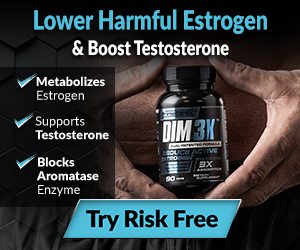Bodybuilding Products
Adipotide: Dangerous Fat-Burner or Miracle Drug?
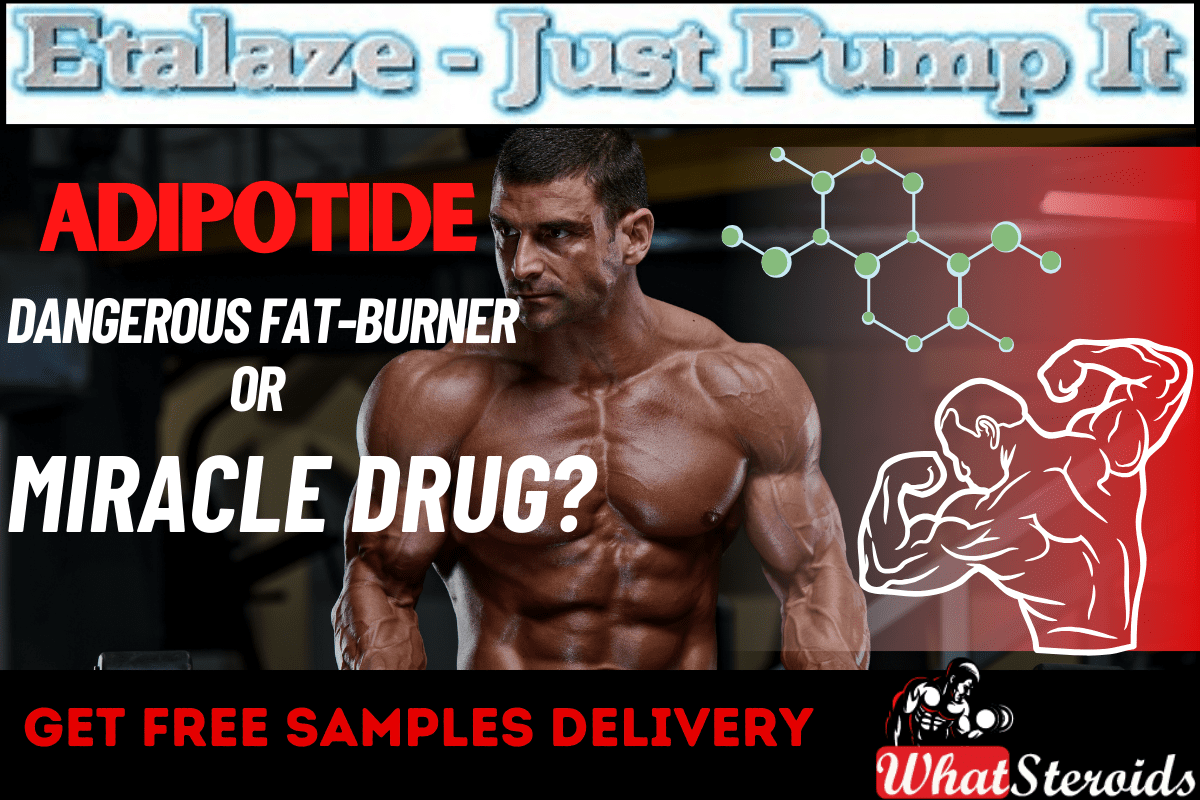
Adipotide is a peptide that has gained attention in the bodybuilding space for its potential as a fat-burning drug. However, there are conflicting opinions on whether it should be considered a dangerous fat-burner or a miracle drug.
Some experts view Adipotide as a promising solution for weight loss, as it targets and destroys fat cells in the body. On the other hand, concerns have been raised about its safety and potential side effects.
Understand Adipotide in Medical Cycles
Adipotide is an experimental drug that has shown potential in targeting and destroying fat cells, leading to weight loss. However, it is important to note that Adipotide is still in the early stages of research and development, and its safety profile has not been fully established yet.
Must Read: Powerlifting Vs Power Building: Find Out the Big Difference and When to Shift Between the Two
As with any new drug, there are concerns about potential side effects and long-term safety issues that need to be carefully evaluated through rigorous clinical trials. It's always advisable to consult with a healthcare professional before considering any new weight loss treatment option.
There are potential dangers associated with Adipotide. It is crucial for bodybuilders to consider using the compound with caution.
Experimentation and Working Mechanism
As mentioned, Adipotide is an experimental peptide developed by researchers at the University of Texas MD Anderson Cancer Center in the early 2000s. Initially, it was designed as a potential treatment for cancer by targeting the blood vessels that feed tumors, essentially starving them of nutrients. However, during preclinical studies in animal models, researchers observed a significant reduction in body fat alongside its anti-tumor effects.
This compound has been linked to side effects such as dehydration, kidney damage, and gastrointestinal issues. Consulting with a healthcare professional before considering its use is crucial to ensure safety and proper guidance.
Prioritizing your health and well-being should always be a top priority when exploring any new treatment or supplement.
Adipotide Protocol for Pro bodybuilders
We may not recommend this particular peptide for obvious reasons, mostly because there is very little research on it. We however have some information we have gathered, and this should guide you on how to use it.
Injecting Adipotide
We recommend 0.5mg/day injected subcutaneously for a week. Take the following week off before using another dose. This should go on for a couple of weeks until you get the results you're looking for.
Using more that this recommended dosage could result in the side effects discussed earlier.
Most importantly, we advise taking a lot of water while using Adipotide. You must also try to create an optimal electrolyte balance. Moreover, take Supplements that could go a long way in protecting your kidneys from the advanced effects associated with using the substance.
Supplements You Can Use to Mitigate Adipotide Effects
Here's a list of supplements you might consider for supporting overall health and potentially mitigating the effects of Adipotide
 Click here to buy. Enan 250 by Ultima Pharmaceuticals
Click here to buy. Enan 250 by Ultima Pharmaceuticals
Antioxidants
Such as vitamin C, vitamin E, and selenium, which help neutralize free radicals generated by exposure to pollutants and toxins.
Omega-3 fatty acids
Found in fish oil or flaxseed oil, which have anti-inflammatory properties and support heart health.
N-Acetyl Cysteine (NAC)
A precursor to glutathione, a powerful antioxidant produced in the body that helps detoxify harmful substances.
Milk thistle
Known for its liver-protective properties, it may help support liver function, which is essential for detoxification.
Curcumin
The active compound in turmeric, which has antioxidant and anti-inflammatory effects and may support liver health.
Probiotics
Beneficial bacteria that support gut health, which is crucial for proper digestion and absorption of nutrients, as well as detoxification.
Chlorella or Spirulina
Nutrient-dense algae that may help bind to heavy metals and support detoxification processes in the body.
Glutathione
Often taken in supplemental form, it is a powerful antioxidant involved in detoxification processes in the liver.
Alpha-lipoic acid (ALA)
Another antioxidant that helps regenerate other antioxidants in the body, such as glutathione and vitamins C and E.
Quercetin
A flavonoid found in various fruits and vegetables, known for its antioxidant and anti-inflammatory properties.
Check This Out: Human Chorionic Gonadotropin – A Hormone of Health
More Mineral-Based Supplements
Vitamin D
Essential for bone health, immune function, and overall well-being. Adequate levels of vitamin D may also support detoxification processes.
Magnesium
Important for muscle function, energy production, and nerve transmission. It also supports detoxification pathways in the body.
Zinc
Plays a role in immune function, protein synthesis, and antioxidant activity. It may help protect against oxidative stress caused by harmful chemicals.
Selenium
An essential mineral that supports thyroid function and acts as an antioxidant, protecting against oxidative damage.
B-complex vitamins
Including B1 (thiamine), B2 (riboflavin), B3 (niacin), B5 (pantothenic acid), B6 (pyridoxine), B7 (biotin), B9 (folate), and B12 (cobalamin). These vitamins are involved in energy metabolism and may help counteract stress from intense training and environmental toxins.
Vitamin A
Important for immune function, vision, and skin health. It also has antioxidant properties that can help protect against oxidative stress.
Manganese
Required for proper metabolism, bone formation, and antioxidant defense mechanisms.
Coenzyme Q10 (CoQ10)
A compound that helps generate energy in cells and has antioxidant properties. It may also support cardiovascular health.
Resveratrol
Found in grapes, red wine, and certain berries, resveratrol has antioxidant and anti-inflammatory effects that may help protect against oxidative damage.
Ashwagandha
An adaptogenic herb that may help reduce stress, support adrenal function, and enhance overall resilience to environmental stressors.
Who Should Take Adipotide?
Adipotide is not for everyone. But if you are a very experienced bodybuilder who has tried every other potentially dangerous drug under the sun and you happen to have very healthy kidneys we won't try to keep you from using this one.
Overall
Most bodybuilders will agree that Adipotide is a fascinating yet potentially dangerous fat-burning peptide. It has gained quite a reputation in the enhanced bodybuilding echelon. In our opinion and experience with peptides, the benefits do not outweigh the dangers.
Related Article: Cost of Steroids: Are they Worth Your Money?
In summary, you could avoid it and opt for safer alternatives like AOD-9604 and HGH Fragment 176-191. Etalaze.to is your #1 steroids and Supplements store, with a range of approved and safe products for bodybuilders of all levels.
Bodybuilding
Here Is How To know Your MRV (Maximum Recoverable Volume)

MRV (Maximum Recoverable Volume) refers to the highest training volume an individual can handle while still making progress. It’s a personalized threshold that considers sets, reps, and intensity within a given period (usually a week).
Don't Miss: Best Creatine Pills vs. Powder – Pros and Cons of Both Forms
Exceeding MRV can lead to overtraining, causing fatigue, performance decline, and injury risk. Progressive overload is key, but staying below MRV ensures sustainable gains.
The optimal rep range for Maximum Recoverable Volume (MRV) depends on individual factors, but generally, a moderate rep range of 6 to 12 repetitions per set is effective. This range balances muscle tension, metabolic stress, and mechanical tension, promoting both strength and hypertrophy. Remember to listen to your body and adjust based on your recovery capacity.
Factors That Determine MRV
Here’s a concise breakdown of the factors influencing an individual’s Maximum Recoverable Volume (MRV):
Hormonal Environment
Hormone levels (endogenous or exogenous) impact recovery speed and MRV.
Higher hormone levels correlate with better recovery and a higher MRV.
Nutrition
Adequate macronutrient intake (especially protein) affects recovery and MRV.
Proper nutrition supports muscle repair and capacity for higher training volumes.
Training Experience
Beginners have a lower MRV due to unfamiliarity with high training volumes.
Advanced athletes, with more training years, usually have a higher MRV.
Age
Younger athletes tend to have a higher MRV due to better recovery abilities.
As athletes age, recovery slows down, reducing MRV.
Sleep
Adequate sleep is essential for recovery. Lack of sleep can negatively impact your MRV.
Genetics
Genetic factors also contribute. Some individuals naturally have a higher MRV than others.
Must Read: Horse Chestnut and Other Supplements to Get Rid of Water Retention
Better Ways to Improve Your MRV
Let’s explore ways to enhance a bodybuilder’s Maximum Recoverable Volume (MRV) for optimal muscle growth.
Gradual Volume Progression: Increase training volume gradually over time. Monitor recovery and adjust accordingly.
Personal Volume Landmarks: Understand your individual MRV. Experiment with weekly sets and track recovery.
Balanced Stimulus-Fatigue Ratio: Optimize exercise-specific stimulus while managing fatigue.
Quality Over Quantity: Focus on effective reps and quality sets rather than excessive volume.
Periodization: Vary training volume across mesocycles (e.g., high, moderate, low volume phases).
Frequency: Spread volume across multiple sessions per week for better recovery.
Compound Movements: Prioritize compound exercises for efficient volume utilization.
Rest Intervals: Adjust rest times to balance fatigue and performance.
Nutrition and Sleep: Support recovery with proper nutrition and adequate sleep.
Deload Weeks: Regularly incorporate lighter training weeks to manage fatigue.
Auto-Regulation: Listen to your body and adjust volume based on daily readiness.
Supplement Timing: Use supplements (e.g., creatine, BCAAs) strategically to aid recovery.
Active Recovery: Include light activities (e.g., walking, swimming) on rest days.
Mind-Muscle Connection: Focus on muscle contraction during each set.
Intra-Workout Nutrition: Consider BCAAs or carb-based drinks during training.
Variety: Rotate exercises to prevent staleness and optimize volume.
Warm-Up Sets: Gradually ramp up intensity to avoid sudden volume spikes.
Individual Recovery Factors: Consider stress levels, age, and lifestyle.
Volume Cycling: Periodically reduce volume to enhance recovery capacity.
Systemic MRV: Prioritize muscle groups based on overall recovery capacity.
Note that individual responses vary, so adjust these strategies based on your unique needs.
Deloading Phases to Increase Your Chances of Success
Deloading phases, also known as deload weeks, are strategically planned periods of reduced training intensity and volume. They serve several purposes in a well-structured training program.
Recovery and Adaptation
Deloading allows your body to recover from accumulated fatigue caused by intense training.
During deloads, you reduce the stress on muscles, joints, and the nervous system.
This recovery time helps prevent overtraining and promotes adaptation.
Performance Enhancement
After a deload, you often experience improved performance due to better recovery.
Strength, power, and endurance may increase as your body adapts to the previous workload.
Mental Refreshment
Deloads provide a mental break from heavy training.
They prevent burnout and maintain motivation by preventing staleness.
How to Implement Deloads
Frequency: Deloads typically occur every 4-8 weeks, depending on your training intensity and individual needs.
Volume Reduction: Decrease training volume (sets, reps, or both) by about 40-60% during the deload week.
Intensity: Maintain intensity (weight lifted) but reduce overall workload.
Focus on Form and Technique: Use the deload week to fine-tune your lifting technique.
Cardio and Mobility: Include light cardio and mobility work to promote blood flow and flexibility.
For instance, if you’ve been lifting heavy weights, reduce the weight and perform fewer sets and reps.
For endurance athletes, decrease mileage or intensity during deload weeks.
Deloading is individualized. Listen to your body, assess your recovery needs, and adjust the deload parameters accordingly.
Is It Possible to Measure MRV?
We have seen that MRV is a critical concept for optimizing muscle growth. But can you measure it accurately? Here are some methods to determine your MRV:
Trial and Error Approach: Gradually increase your weekly training volume (sets and reps) over several weeks. Monitor your recovery and performance. When you notice a decline in performance or recovery, you’ve likely reached your MRV.
Incremental Volume Increase: Start with a relatively low work volume (fewer sets per muscle group) at the beginning of a training cycle. Add 1-2 sets per muscle group each week. Observe when performance starts to dip, as that indicates your MRV.
Overall
In summary, the concept of Maximum Recoverable Volume (MRV) holds immense significance for those aiming to optimize their training routines for muscle growth and overall performance.
By delving into the intricacies of MRV and respecting its boundaries, you can safely push their limits, ensuring consistent progress while minimizing the risk of overtraining. The dynamic nature of MRV, influenced by multifaceted factors such as training experience, age, hormonal balance, nutrition, quality of sleep, and genetic predisposition, underscores the value of personalized training programs.
 Click Here to Buy Rybelsus Semaglutide Tablets
Click Here to Buy Rybelsus Semaglutide Tablets
Regularly assessing and fine-tuning training volume allows bodybuilders to unlock their full potential in their fitness endeavors. While other variables certainly matter, training volume remains a pivotal factor in achieving fitness goals efficiently and effectively.
Related Article: Top 10 Erection Gels & Creams for Him
Anabolic Steroids
How Much Do You Know About B-AET? A Fat Burner You’ve Been Missing

Introduction to B-AET
B-AET, or Beta-Androstenetriol, is a DHEA derivative known for its impressive health benefits, including anti-catabolism and fat loss. Despite its advantages, it remains largely unknown because it is hard to obtain, not due to any significant drawbacks.
Let’s delve into its properties:
Anti-Catabolic Effects: B-AET helps prevent muscle breakdown (catabolism). By preserving muscle tissue during intense workouts or calorie deficits, it supports overall fitness goals.
Fat Loss Potential: B-AET may enhance fat loss. While the exact mechanisms aren’t fully understood, it likely influences metabolism and fat utilization.
Challenges with Availability: As we've mentioned, B-AET is not widely accessible. Its scarcity limits research and popularity.
Comparing B-AET to 7-KETO DHEA
Similar to 7-KETO DHEA, B-AET does not suppress the HPTA and promotes fat loss by inhibiting cortisol. Based on personal experience, B-AET offers superior results compared to 7-KETO DHEA.
Must Read: 10 Week Program & 5,000 Rep Arm Specialization Program
Understanding Cortisol’s Role in Fat-Loss
Cortisol, released in response to stress, was crucial for survival in our evolutionary past. However, in today's world, chronic stress leads to persistently high cortisol levels, contributing to various health issues including fat accumulation, especially around the abdomen, insulin resistance, muscle loss, increased blood pressure, weakened immunity, impaired memory, decreased bone density, inhibited collagen synthesis, hair loss, depression, and lower testosterone levels.
Benefits of Beta-Androstenetriol
B-AET helps with fat loss by inhibiting cortisol production through the suppression of the enzyme 11β-HSD1. Users often notice significant fat reduction, especially around the lower belly. Additionally, B-AET lowers overall stress, enhances immune function, prevents muscle loss during calorie restriction, and has anti-inflammatory properties.
B-AET helps prevent muscle breakdown during intense training, preserving your hard-earned muscle mass.
By supporting muscle preservation and potentially aiding fat loss, B-AET can optimize overall performance during cutting phases.
Potential Side-Effects of Beta-Androstenetriol
Data on B-AET’s side effects is limited. Anecdotal reports suggest minimal side effects, but overuse could potentially lead to decreased stress response, fatigue, and low blood pressure due to chronically low cortisol levels. However, these risks are minimal if B-AET is used properly.
Let’s explore the potential dangers associated with Beta-Androstenetriol (B-AET) in detail:
Limited Research: As mentioned, B-AET remains relatively unknown due to limited research. Lack of comprehensive studies makes it challenging to fully understand its safety profile and potential risks.
Individual Variability: As with any compound, individual responses can vary. What works well for one person may not be suitable for another. Always consider your unique physiology and consult a healthcare professional.
Potental Side Effects
Gastrointestinal Disturbances: Some peptides can affect the digestive system, leading to nausea, vomiting, diarrhea, or stomach discomfort. While these side effects are typically transient, they’re worth noting.
Appetite and Blood Sugar: GHS peptides (including B-AET) may increase appetite and blood sugar levels.
Fluid Retention: Fluid retention is another possible side effect.
Legal Status: B-AET’s legal status varies by region. Ensure compliance with local regulations and restrictions.
Dosage and How to Use B-AET
 Click Here to Buy TB-500 10 mg by Magnus Pharma
Click Here to Buy TB-500 10 mg by Magnus Pharma
B-AET can be taken orally or applied topically. Due to poor bioavailability when taken orally, the topical application is far more effective and may offer localized benefits. Let’s explore dosage and usage in detail.
Dosage
Unfortunately, there isn’t a universally established dosage for B-AET due to limited research and availability.
If you decide to use it, start with a conservative dose and gradually increase if needed.
Consult a healthcare professional or a knowledgeable coach who understands peptide usage.
Usage
B-AET is typically administered via subcutaneous injections.
Follow these general guidelines:
Frequency: Inject once or twice daily.
Timing: Some users prefer morning injections to align with natural cortisol rhythms.
Cycle Duration: Cycles can vary from a few weeks to several months.
Stacking: B-AET can be stacked with other peptides or compounds for synergistic effects.
Always:
Rotate Injection Sites: Avoid injecting in the same spot repeatedly.
Reconstitute Properly: If using lyophilized powder, follow reconstitution instructions.
Store Correctly: Keep B-AET refrigerated to maintain stability.
Other Fat-burning Alternatives to Consider
Also Read: 5 Steroid Cycles for Beginners
As a bodybuilder looking to optimize fat loss, consider incorporating the following peptides into your regimen:
Amlexanox
Function: Originally used for oral ulcers, Amlexanox has shown potential for fat loss. It activates an enzyme called AMP-activated protein kinase (AMPK), which plays a role in energy regulation and fat metabolism.
Mechanism: By enhancing AMPK activity, Amlexanox promotes fat breakdown (lipolysis) and inhibits fat storage (lipogenesis).
Administration: Available as a topical gel or oral medication.
Note: Research is ongoing, and its effectiveness for bodybuilders specifically needs further investigation.
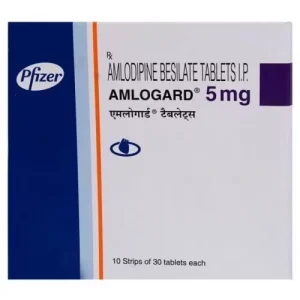 Click Here to Buy Amlogard 5 mg by Indian Pharmacy
Click Here to Buy Amlogard 5 mg by Indian Pharmacy
Glycyrrhetinic Acid
Function: Derived from licorice root, Glycyrrhetinic acid has anti-inflammatory properties and may aid fat loss.
Mechanism: It inhibits an enzyme called 11-beta-hydroxysteroid dehydrogenase, which affects fat distribution.
Administration: Often used in topical creams or as a supplement.
Caution: High doses can lead to side effects, so moderation is crucial.
Tesofensine
Function: Tesofensine was initially developed as an anti-obesity drug.
Mechanism: It increases levels of neurotransmitters like serotonin, dopamine, and norepinephrine, leading to reduced appetite and increased fat burning.
Administration: Oral tablets.
Note: Not widely available due to limited research and regulatory hurdles.
AOD9604
Function: AOD9604 is a modified fragment of human growth hormone (HGH).
Mechanism: It stimulates lipolysis (fat breakdown) without affecting blood sugar levels or muscle growth.
Administration: Typically injected.
Caution: Consult a healthcare professional before use.
5-Amino-1MQ
Function: 5-Amino-1MQ is a novel compound with potential fat-burning effects.
Mechanism: It interacts with mitochondria, enhancing energy expenditure and fat oxidation.
Availability: Limited due to being a newer discovery.
Overall
When it comes to burning fat in bodybuilding, a combination of heavy training and cardio is effective. Heavy weights help build muscle and improve strength, while cardio aids in fat loss. Additionally, consider incorporating fat-burning exercises into your routine.
However, if you can lay hands on B-AET and safely, it might just be the product you have been looking for. Good luck as you embark on a journey to get rid of that extra fat.
Related Article: First Injectable Steroid Cycle
Bodybuilding Products
TRT Add-ons: The Ultimate Guide

Testosterone Replacement Therapy (TRT) has become a popular solution for men looking to regain their youthful vitality and improve their overall health. However, TRT alone may not be enough to achieve optimal results. That’s where TRT add-ons come in. These additional compounds can enhance the effects of TRT and address specific goals or concerns.
Most bodybuilders may prefer safer natural supplements or synthetic drugs to enhance their TRT (Testosterone Replacement Therapy) without resorting to anabolic steroids. Let’s explore three natural supplements and three synthetic options that can complement your TRT protocol.
Must Read: Steroids That Can Be Used For Joints Or Ligaments Injuries
Natural Add-Ons
1. Saw Palmetto
- A mild inhibitor of the 5-alpha-reductase enzyme, it prevents the conversion of Testosterone into DHT.
- Useful for hair loss, acne, and preventing benign prostatic hyperplasia.
- Take 200 mg daily.
2. Boron
- Boron, a mineral found in the periodic table, isn’t strictly essential but offers benefits.
- It improves bone health, recovery, and neuroprotection.
- Most importantly, it decreases SHBG (Sex Hormone-Binding Globulin) and increases Free Testosterone.
- Take 5 to 6 mg per day, with a week off for every two weeks of use.
3. Diindolylmethane (DIM)
- Found in cruciferous vegetables, DIM acts as a mild aromatase inhibitor (AI) and improves Estrogen metabolism.
- Consider DIM if you tend to aromatize excessively.
- Start at 50 mg/day and adjust up to 150 mg/day if needed.
Other Natural Supplements for TRT
Include Vitamin D3, Vitamin K2, Vitamin C, Magnesium, Zinc, and Berberine.
Synthetic Add-Ons
- PDE5 Inhibitors (Cialis or Viagra)
- Widely used by TRT users.
- Enhance blood flow, leading to better erections, lower blood pressure, and improved gym performance.
- May increase protein synthesis and muscle building.
- Take 5 to 10 mg of Tadalafil or 25 to 50 mg of Sildenafil as needed.
-
Cardarine
- Potentially risky in the long term due to rodent cancer studies.
- Short-term use benefits cardiovascular health, insulin sensitivity, fat loss, and endurance.
- Take 10 to 20 mg daily for no more than 8 weeks.
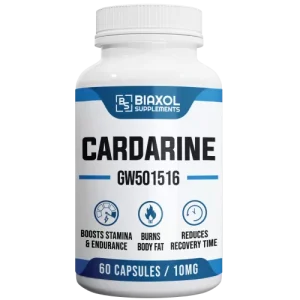 Click Here to Buy Cardarine (GW501516) by Biaxol
Click Here to Buy Cardarine (GW501516) by Biaxol
-
Peptides
- Numerous useful peptides available.
- BPC-157 and TB-500 aid healing.
- DSIP promotes better sleep.
- Ipamorelin and CJC-1295 act as GH secretagogues.
- Consider peptide therapy through TRT clinics or with a doctor’s prescription.
More TRTs You Can Find Helpful
Peptide Therapy
Peptides are short chains of amino acids that can have various effects on the body. Some peptides, like growth hormone-releasing peptides (GHRPs) and CJC-1295, may enhance muscle growth, fat loss, and overall well-being when combined with TRT.
Primo (Primobolan)
Primobolan is an anabolic steroid that is often considered mild and estrogen-neutral. It can provide additional anabolism without the side effects associated with raising testosterone doses. Primobolan is a good choice for those seeking a subtle boost during TRT.
Nandrolone (Deca/NPP)
Nandrolone is another anabolic steroid that can be added to TRT. It’s known for joint support, favorable dosing, and maintaining muscle fullness. However, individual responses vary, so it’s essential to monitor how your body reacts.

Drostanolone propionate
Masteron supports high-intensity training during TRT by impacting the nervous system. It may help you push more weight and maintain muscle quality during cruises.
Dehydroepiandrosterone
Dehydroepiandrosterone (DHEA) is a natural hormone that declines with age. Some people find that supplementing with DHEA improves energy, mood, and overall well-being when combined with TRT.
Oxandrolone
Anavar is an oral steroid that can enhance muscle growth and strength. It’s often used during TRT for its anabolic properties.
Tadalafil
Tadalafil is commonly used for erectile dysfunction, but it also promotes blood flow to muscles. Some people take it daily to reduce inflammation and potentially raise testosterone levels.
Remember that individual responses to these compounds can vary, and it’s essential to consult with a healthcare professional before adding any substances to your TRT protocol.
Must Read: The Importance of Scaptions in Female Athletes
Dietary Considerations While on TRT
When you’re on testosterone replacement therapy (TRT), following a proper diet is essential for optimal results. Here are some dietary considerations to keep in mind:
Exercise Regularly: Although not directly related to diet, regular exercise is crucial for maximizing the benefits of TRT. Aim for weightlifting or resistance training 3 to 4 times a week, along with cardio exercises on non-weightlifting days.
Prioritize Protein: Protein supports muscle growth and repair. Aim for 0.7 to 1 gram of protein per pound of body weight daily. Include lean meats, fish, poultry, and quality protein supplements like casein or whey.
Pre-Workout Nutrition: Consume a high-protein, high-carbohydrate meal about two hours before your workout. If time is limited, have a protein drink an hour before exercising. After your workout, opt for a protein-rich meal with simple carbohydrates (rice, potatoes, pasta).
Health-Promoting Supplements: Consider supplements like Coenzyme Q10, Vitamin D3, Vitamin B-12, Creatine, Curcumin, Resveratrol, Fish Oil, and Glucosamine/Chondroitin. These can complement TRT and overall health.
Fiber Intake: Aim for at least 20 grams of fiber daily from sources like beans, vegetables, fruits, oatmeal, and whole-grain bread.
Remember, these guidelines apply to everyone, not just those on TRT. Prioritize a balanced diet, stay hydrated, and avoid excessive sugar and alcohol intake to optimize your health and fitness goals while on TRT.
Maintaining Optimal Hormonal Balance While on TRT
To maintain optimal health while on TRT, regular lab testing is crucial. Monitoring specific health markers helps guide your treatment. Here are the key markers to keep an eye on:
Total and Free Testosterone: Aim for an upper-normal range.
Estrogen Levels: Excess estrogen can lead to unwanted side effects.
Complete Blood Count (CBC): This test checks for elevated red blood cell count.
Liver Enzymes: Ensures your liver is handling TRT properly.
Lipid Profile: Monitors cholesterol levels.
PSA (Prostate-Specific Antigen): Screen for prostate cancer risk if you’re over 50.
Before starting TRT, get baseline blood work done. Then repeat it at 4-6 weeks and every 3-6 months once your levels stabilize. Frequent testing provides valuable insights to fine-tune your TRT protocol and optimize how you feel.
Overall
Testosterone Replacement Therapy (TRT) can be a powerful tool for bodybuilders, but it requires careful consideration. TRT stands for Testosterone Replacement Therapy. It’s a medical treatment used to address low testosterone levels. Administered through injections, patches, gels, or pellets, TRT helps restore testosterone levels to a healthier range. Benefits include improved muscle strength, energy levels, and overall well-being. Bodybuilders often use testosterone differently than standard TRT protocols. While TRT can enhance muscle growth, it’s not typically enough for IFBB pro bodybuilding competition.
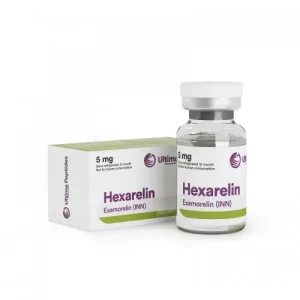 Click Here to Buy Hexarelin 5mg by Ultima Pharmaceuticals
Click Here to Buy Hexarelin 5mg by Ultima Pharmaceuticals
Typical dosages for bodybuilding range from 200 to 1000 milligrams per week. The benefits include enhanced muscle growth, improved energy levels, and increased libido. However, it’s essential to remember that TRT should always be supervised by a healthcare professional. If you’re considering it, consult with a specialist to determine if it’s the right choice for you!
Check Out: Best supplements for College students
-

 Bodybuilding2 years ago
Bodybuilding2 years agoNew Arrival Workout Equipment on Amazon for The Disabled
-

 Steroids2 years ago
Steroids2 years agoSupplemental Breast Milk for Bodybuilders: The Secret Behind It
-

 Steroids2 years ago
Steroids2 years agoDwarf Bodybuilders Giving Pros A Run for Their Money
-

 Steroids1 year ago
Steroids1 year agoVOX Testing: Why Bodybuilders Must Have It Tested Regularly
-

 Steroids1 year ago
Steroids1 year agoShavers and Other Body Grooming Equipment for Bodybuilders In 2023
-

 Steroids1 year ago
Steroids1 year agoChatGPT and Other Avenues to Find Great Bodybuilding Coaches
-

 Steroids1 year ago
Steroids1 year agoBest Oil Recommendations Before Competition for Subtle Shimmer
-

 Steroids1 year ago
Steroids1 year agoPowerlifting Vs Power Building: Find Out the Big Difference and When to Shift Between the Two
-

 Beginners12 months ago
Beginners12 months agoTren Cycle for Beginners
-

 Bodybuilding11 months ago
Bodybuilding11 months agoCompetition Prep Cycle for Pro Bodybuilders
-

 Nutrition9 months ago
Nutrition9 months agoEverything Nutritional Food: What’s Too Much Or Too Little
-

 Anabolic Steroids8 months ago
Anabolic Steroids8 months agoLegality of Anabolic Steroids In Latin America
-

 Bodybuilding8 months ago
Bodybuilding8 months agoChia Seeds in A Bodybuilder’s Diet: An Expert’s Advice
-

 Bodybuilding6 months ago
Bodybuilding6 months agoList of FDA-Approved Peptides
-

 Anabolic Steroids7 months ago
Anabolic Steroids7 months agoStart The New Year Strong With These Tips
-

 Anabolic Steroids9 months ago
Anabolic Steroids9 months agoNatural Steroids for Bodybuilding
-

 Beginners9 months ago
Beginners9 months agoCalisthenics: Secret to Building A Better Upper and Middle Body
-

 Bodybuilding7 months ago
Bodybuilding7 months agoUnique Things That Have Redefined Mr Olympia Over The Years
-

 Steroids5 months ago
Steroids5 months agoTrenbolone: Why it Remains A Beast In the Market
-

 Bodybuilding Products4 months ago
Bodybuilding Products4 months agoTelmisartan In Bodybuilding: An Expert’s Advice
-

 Bodybuilding5 months ago
Bodybuilding5 months agoThe Importance of Scaptions in Female Athletes
-

 Bodybuilding4 months ago
Bodybuilding4 months agoHow Much Is Too Much Cardio? Understanding Heart Rate Zones
-

 Bodybuilding6 months ago
Bodybuilding6 months agoFunny Gym Stories and Moments to Light Up Your Day
-

 Steroids8 months ago
Steroids8 months agoThese Bodybuilding Equipment Might Become Obsolete Next Year (See Alternative Upgrades)
-

 Bodybuilding7 months ago
Bodybuilding7 months agoCalorie Dumping: A Bodybuilder’s Guide



